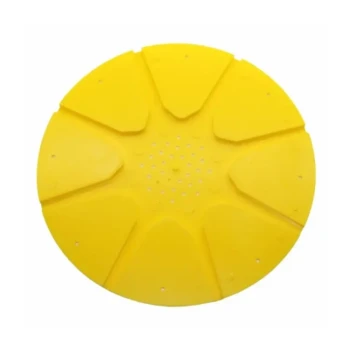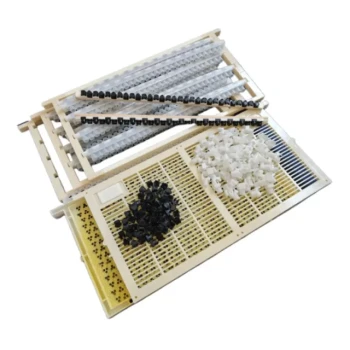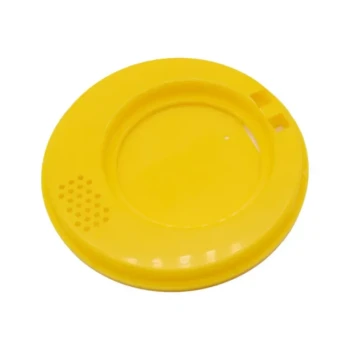The most common liquid beekeepers spray to calm bees is a simple sugar water solution. This mixture, typically in a 1:1 ratio of dissolved sugar to water, serves as a gentle alternative to a smoker, especially in delicate situations. It works by distracting the bees with a desirable food source, encouraging them to focus on cleaning and consuming the syrup rather than on the beekeeper's intrusion.
The core principle is simple: while a smoker uses an alarm signal to manage bees, a sugar water spray uses a positive stimulus. This makes it an ideal tool for calming and directing bees during sensitive operations like installing a new colony.
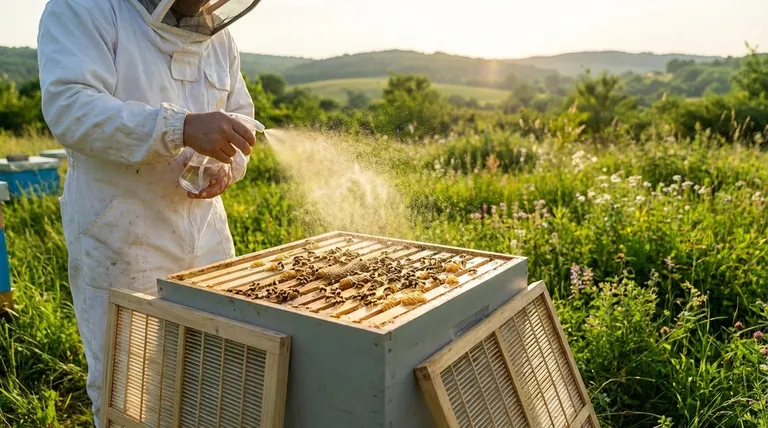
How Sugar Water Calms Bees
Understanding the mechanism reveals why this technique is so effective. The spray leverages two key bee behaviors to achieve a state of calm within the colony.
The Distraction Effect
When sprayed with sugar water, the bees' immediate priority shifts. They become preoccupied with cleaning the sweet, sticky substance off themselves and their hive mates.
This grooming and feeding response overrides their natural defensive instincts. Instead of perceiving the beekeeper as a threat, they are fully engaged in the task of consuming the unexpected treat.
Simulating a Nectar Flow
A sudden abundance of sweet liquid mimics a "nectar flow"—a period when flowers are producing ample nectar. This natural event signals a time of plenty and hard work for the colony.
When bees sense a nectar flow, their collective mood shifts from defense to productivity. A sugar water spray artificially triggers this calm, focused state, making the colony more docile and manageable.
The Primary Use Case: A New Colony
While a smoker is the standard tool for most hive inspections, the sugar water spray is invaluable when introducing a new package of bees to their hive.
Why Avoid a Smoker?
A new package of bees is essentially a homeless, stressed colony. A smoker works by masking alarm pheromones and suggesting a nearby fire, which can cause bees to gorge on honey in preparation for absconding.
Using a smoker on a new, unestablished package can heighten their stress and may even cause them to reject their new home and fly away.
A Gentle Welcome
Spraying a new package with sugar water provides a calming welcome. It gives them a task, offers them their first meal in their new home, and helps the beekeeper gently guide them into the hive without adding unnecessary stress.
Understanding the Trade-offs
Like any technique, using a sugar spray comes with potential downsides that a beekeeper must manage carefully.
Risk of Robbing
Spilling sugar water around the hive entrance can attract bees from other, stronger colonies. This can trigger "robbing," where the foreign bees attack the hive to steal its resources, which can decimate a new or weak colony.
The Chill Factor
Soaking bees in water can be dangerous in cool or cold weather. A wet bee can become chilled and unable to fly back to the cluster for warmth, leading to its death. The spray should be a fine mist, never a drenching.
Making the Right Choice for Your Goal
Using the correct tool depends entirely on your objective and the state of the colony.
- If your primary focus is installing a new package of bees: Use a light mist of 1:1 sugar water to calm and direct them into their new home.
- If your primary focus is performing a routine inspection on an established hive: A smoker is the standard, most effective tool for managing the colony's defensive response.
- If your primary focus is combining two weak colonies: A light spray of sugar water on both groups can help reduce fighting by masking their distinct colony odors.
Ultimately, understanding bee behavior is the key to choosing the right method to ensure a calm and productive interaction.
Summary Table:
| Method | Best Use Case | Key Benefit |
|---|---|---|
| Sugar Water Spray | Installing a new package of bees | Gentle distraction; encourages feeding/cleaning |
| Bee Smoker | Routine inspections on established hives | Masks alarm pheromones; standard for defense management |
Equip Your Apiary with the Right Tools from HONESTBEE
Whether you're a commercial apiary managing hundreds of hives or a distributor supplying beekeepers, using the correct equipment is essential for colony health and productivity. HONESTBEE supplies high-quality beekeeping supplies and equipment through wholesale-focused operations, ensuring you have reliable tools like smokers and feeders for every situation.
Let us help you build a more efficient and successful operation.
Contact HONESTBEE today to discuss your wholesale needs and get the right equipment for your goals.
Visual Guide
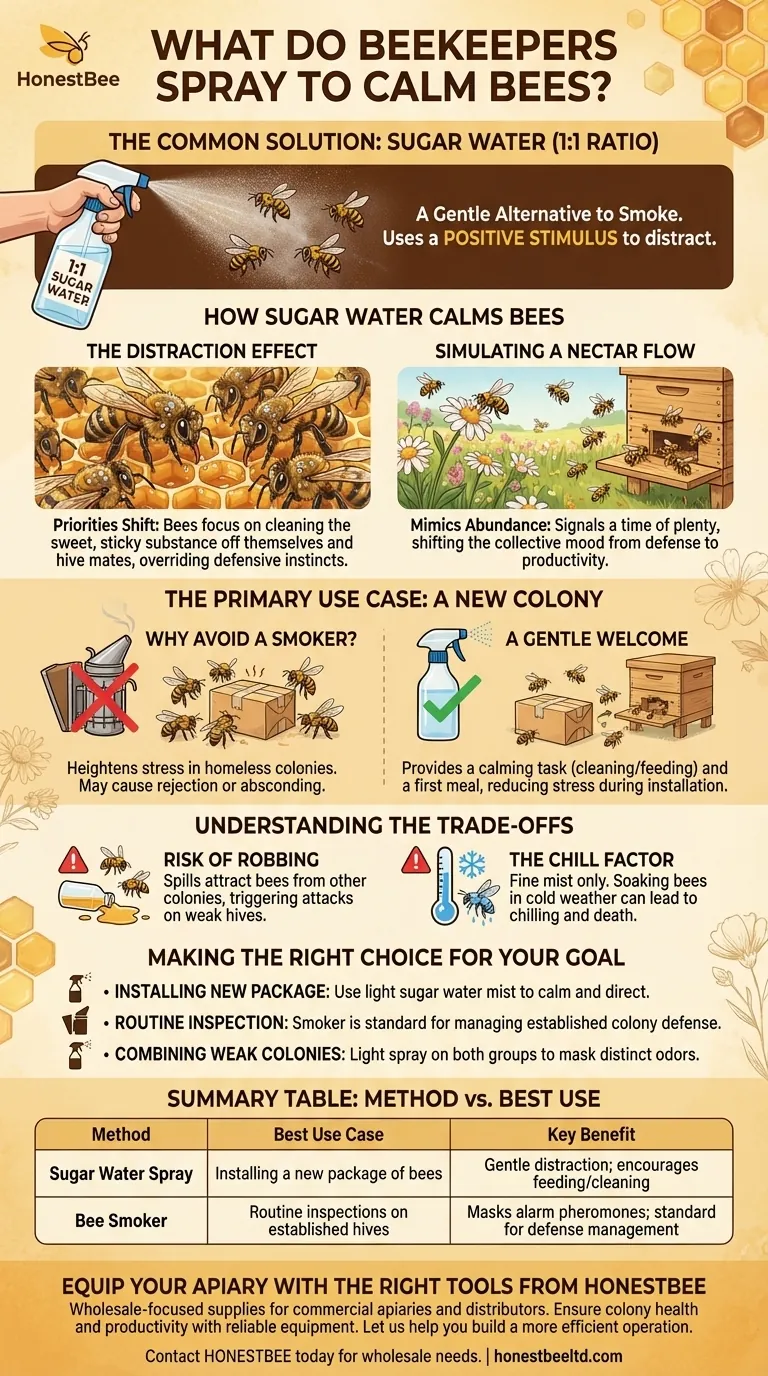
Related Products
- Wooden Queen Bee Excluder for Beekeeping
- Efficient Hive Clearing: HONESTBEE 8-Way Plastic Bee Escape
- HONESTBEE 4-Way Metal Corner Wooden Bee Escape Board
- Durable 16 Way Circular Bee Escape for Efficient Honey Harvesting
- Economy Small Scale Honey Dryer Dehumidifier Thickening Machine
People Also Ask
- What are the advantages of using a queen excluder? Boost Honey Harvest Efficiency & Hive Control
- Which is better, plastic or metal queen excluder? A Guide to Long-Term Hive Success
- What are the disadvantages of using a queen excluder? A Guide to Hive Health & Productivity
- Should queen excluders be used in Flow hives? A Critical Guide for a Clean Harvest
- Can a virgin queen bee get through a queen excluder? Uncover the Critical Swarm Risk

